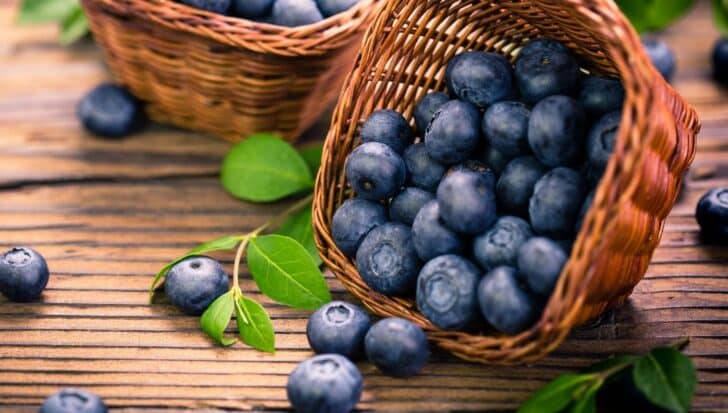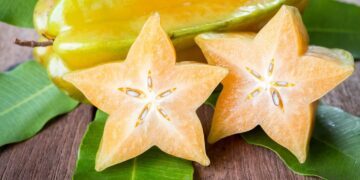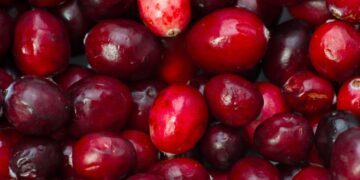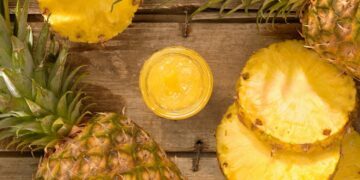Blueberry muffins. Blueberry pie. Blueberries on pancakes. These are just a few of the delicious and well-known dishes made with this popular fruit.
But how much do you really know about blueberries? Let’s dive into the world of this so-called superfood right now.
So, sit back, grab a tub of blueberries, and feast on these delightful facts!
Blueberries have a plethora of health benefits.
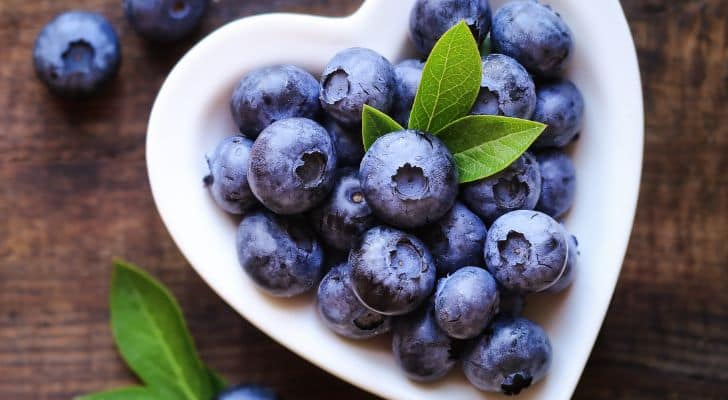
Incredibly, the benefits of blueberries go into double figures!
Those tiny, sweet-flavored berries are rich in nutrients, contain high levels of antioxidants, and aid in reducing muscle damage following high levels of exercise, just to name a few.
Even more remarkably, blueberries help reduce DNA damage, which can aid in fighting cancer. They also maintain brain function and improve your memory!
It’s safe to say that blueberries are extremely good for you!
Blueberries get their color from a waxy coating.
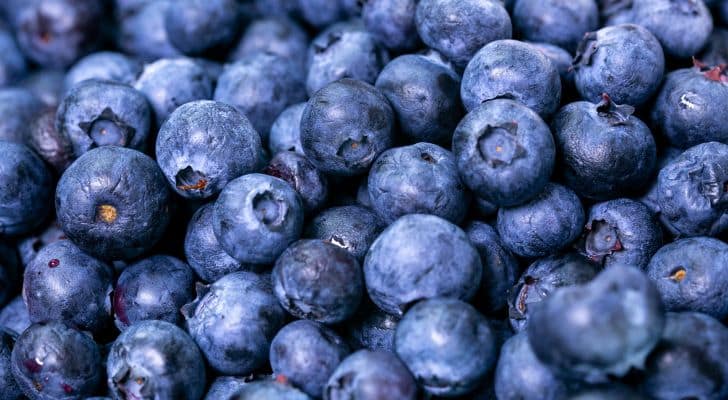
A study released in February 2024 discovered that blueberries have a fascinating waxy outer coating made up of tiny molecular structures that distribute the color blue and UV light.
Scientists were able to take some of this wax and crystallize it on a card to replicate the blue hue.
It gets even more interesting: while humans see only the blue color, birds detect both blue and UV light from blueberries.
The largest producer of blueberries is found in Asia.

The People’s Republic of China stands head and shoulders above the rest of the world as the largest producer of blueberries.
The second-most populous country on the planet, with a population of over 1.4 billion people, has an annual output of an eye-watering 477,080 tons (433,800 tonnes). That’s a lot of blueberries!
Following China, the USA and Peru are the next largest producers of blueberries.
There are around 150 types of blueberries.
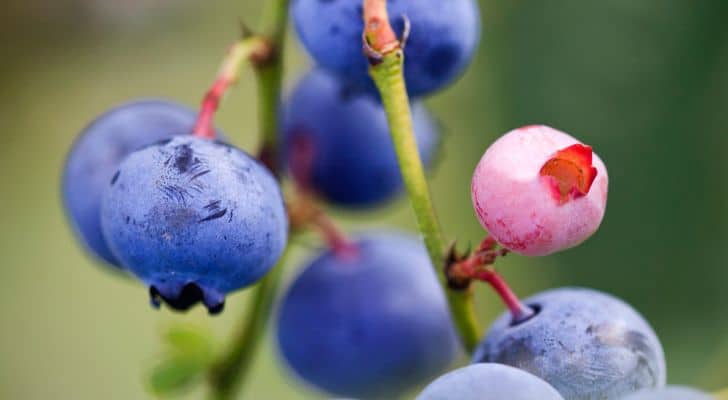
Rabbiteye and hairy (they have interesting names, don’t they?) are just a couple of the many blueberry varieties found around the world.
The most common types of the fruit are highbush, lowbush, mid-high, and rabbiteye.
Highbush blueberries are large; lowbush blueberries are sweet and small; mid-high blueberries are a hybrid of highbush and lowbush, and rabbiteye blueberries start off pink and turn blue as they ripen.
Blueberries were first cultivated in the 1900s.
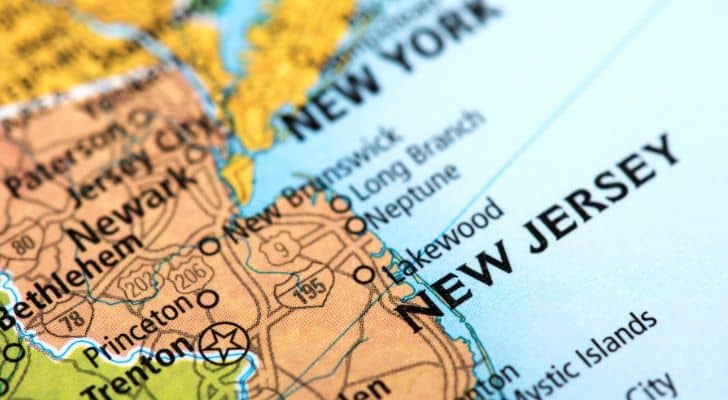
In the 1890s, Elizabeth White from New Jersey saw something special in blueberries and had the idea to cultivate them.
Eighteen years later, White partnered with botanist Frederick Coville to establish a major cultivation, and the pair sold the first commercial crop of blueberries in 1916.
In recent years, the United States has produced over 300,000 tons of blueberries per year. White was undoubtedly onto a brilliant idea!
Sunshine is vital for growing blueberries.

When it comes to growing blueberries, all you need is a blueberry plant, a cool and bright summer, and acidic soil. Sounds pretty straightforward, right?
Well, there is a slight catch: the quality of blueberries may suffer if they are kept in the shade. Catching those rays truly matters to these little berries!
There is a Wild Blueberry Heritage Center in North America.

The Wild Blueberry Heritage Center in Columbia Falls, Maine, was first established by blueberry grower Marie Emerson in 2016.
The non-profit organization’s three goals are to help maintain the largest wild blueberry region in the United States, support the local food economy, and create learning opportunities for both locals and visitors.
Amazingly, the Wild Blueberry Heritage Center is based in a blue dome, making it look like one-half of a giant blueberry!
Blueberries have an entire month dedicated to them.
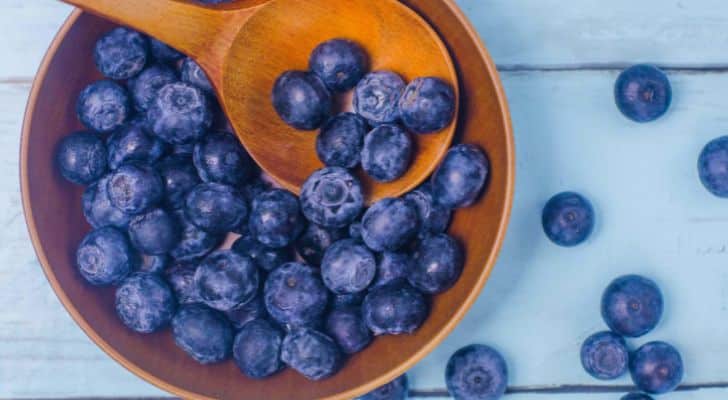
Note this on your calendars: National Blueberry Month is celebrated every July. It’s the perfect time of the year to celebrate the occasion with some blueberries!
The month was first established in 1974 after it was passed by the U.S. Senate and House of Representatives.
If that’s not enough for you, National Blueberry Day is celebrated on July 8, too.
At its inception, President Nixon wanted every American to observe the special month with blueberry-related ceremonies and activities. Berry good job, Mr. President!
One blueberry bush can produce thousands of blueberries a year.
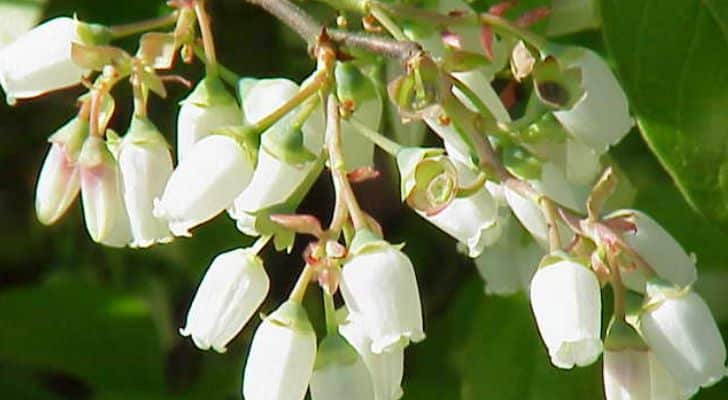
When planted in the right conditions, blueberry bushes produce clusters of white flowers that ultimately turn into blueberries.
Before you know it, the berries can be regularly picked for mouthwatering enjoyment. Amazingly, a single bush can yield up to 6,000 blueberries a year!
Blueberries were considered a sacred fruit by Native Americans.

Blueberries played a crucial role for Native Americans, whether for medicinal uses or as a symbol of renewal and protection.
The fruit was also an integral part of Native Americans’ spiritual lives.
During important ceremonies, the fruit was offered to spirits, as this practice was believed to bring prosperity and good fortune to the community.
From their waxy blue outer layer to their enormous list of health benefits, it’s fair to say that blueberries are an incredibly fascinating fruit.
Next time you snack on some blueberries or enjoy a tasty dish with them, you’ll now have a fantastic understanding of some of the fruit’s brilliant facts!

